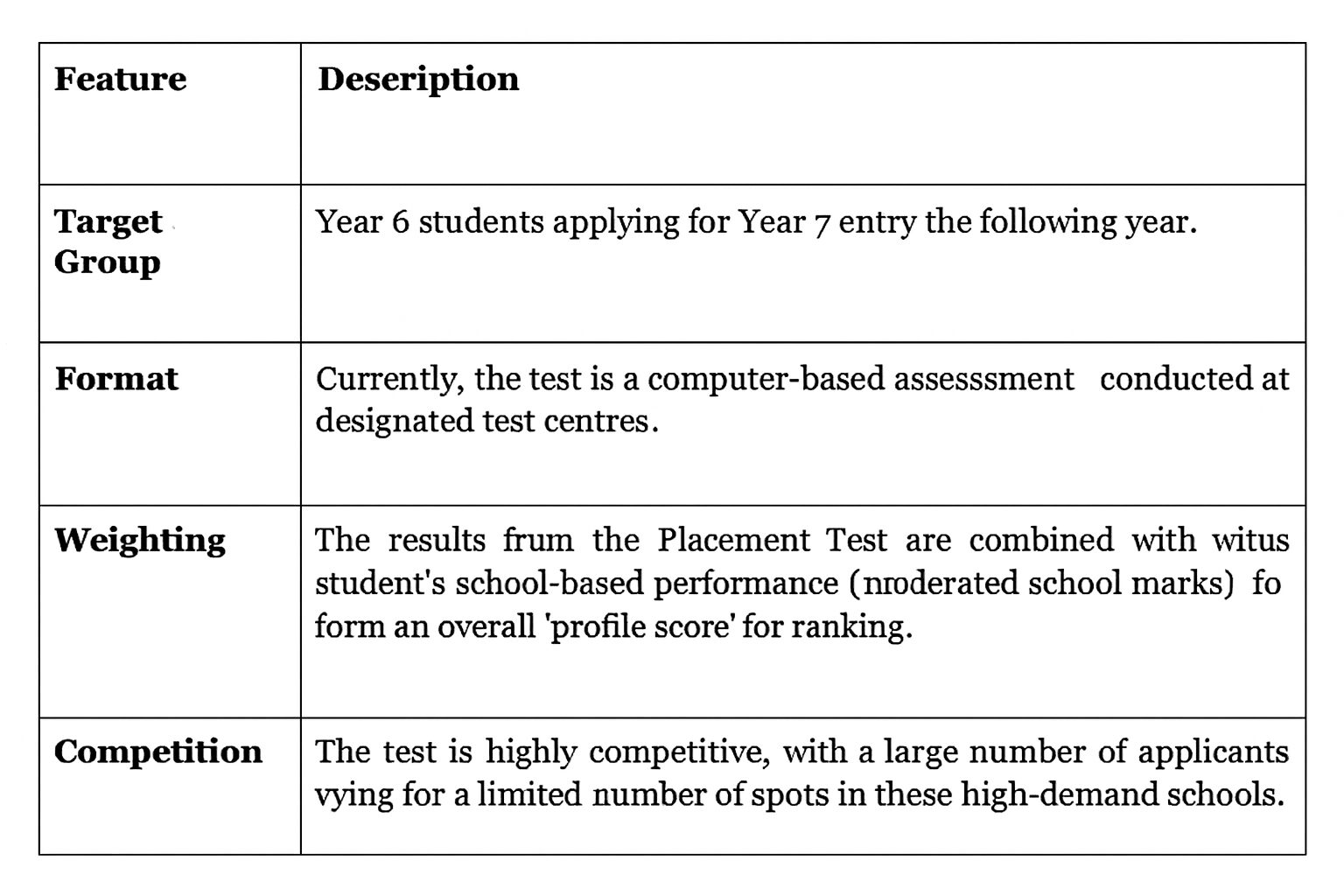
7 Proven Strategies to Improve a student’s Selective High School Placement Test Practice
Knowing Selective High School Placement Test
The Selective High School Placement Test is a highly competitive, academic entrance examination of New South Wales (NSW), Australia, to determine placement for high-achieving students into Selective High Schools for Year 7 entry.
The primary purpose of the test is to identify students who are academically gifted and who would benefit most from an enriched, advanced, and challenging curriculum offered in a selective high school environment.
Key features of Selective High School Placement Test
Selective School Test Practice
Selective High School Placement Test practice is widely considered to be essential for preparation. It goes far beyond simply reviewing content; it provides a comprehensive approach to mastering the specific skills and conditions required to perform well on this highly competitive exam.
Here are 7 proven strategies to help Australian students improve their practice for the Selective High School Placement Test, focusing on effective study and test-taking techniques:
1. Simulate Test Conditions with Timed Practice ⏱️
The test is highly time-constrained. Practicing under strict timed conditions is essential to build stamina and develop effective pacing.
- Use official past papers or realistic practice tests.
- Apply the actual time limits for each section (e.g., 40 minutes for Mathematical Reasoning, 30 minutes for Writing).
- This familiarity helps reduce test-day anxiety, and teaches students how long they can afford to spend on a challenging question before needing to move on.
2. Conduct Deep Analysis of Mistakes 🔍
Simply completing practice tests is not enough; the true learning comes from analyzing errors.
- Review incorrect answers and understand the reason of being incorrect
- Identify patterns in mistakes.
- Dedicate separate study time to re-learn or re-practice the concepts or question types that caused the errors.
3. Focus Effort on Identified Weaknesses 🎯
Every student has stronger and weaker areas. Pinpoint the challenging topics and dedicate proportionally more study time.
- Use practice test reports to accurately quantify performance in each section (Reading, Mathematical Reasoning, Thinking Skills, Writing).
- While maintaining existing strengths, spend extra time practicing problem areas to achieve greater overall score improvement.
4. Master Time-Saving Exam Techniques 🧠
The test assesses ability and problem-solving under pressure, making smart strategies vital.
- Practice the process of elimination for multiple-choice questions, which increases the chance of a correct guess (since there is no penalty for wrong answers).
- Learn to identify ‘time-wasting’ questions and skip them initially, returning only if time permits.
- For the Reading section, try reading the questions before the passage to guide focused reading.
5. Build a Diverse & Wide Vocabulary 📖
Strong literacy is critical for both the Reading and Writing sections.
- Read widely and regularly across different genres: non-fiction, fiction, newspaper articles, and reports.
- Keep a personal dictionary of unfamiliar words encountered during reading and practice tests.
- Practice using new vocabulary in original sentences to solidify understanding and application, which directly boosts writing quality.
6. Structure and Refine Writing Practice ✍️
The Writing test requires high-quality, structured expression within a short time.
- Practice writing to a variety of prompts (e.g., persuasive, narrative, discursive).
- Adopt a timed writing plan,like 3 minutes for planning/outlining, 24 minutes for writing, 3 minutes for editing/proofreading.
- Seek detailed feedback on the structure, development of ideas, language sophistication, and adherence to the prompt to improve your score.
7. Establish a Consistent & Balanced Study Routine ⚖️
Cramming is generally ineffective for tests that measure cumulative ability. Consistency is key.
- Create a structured study schedule that incorporates short, regular sessions rather than long, infrequent ones.
- Use active learning techniques (like teaching a topic to someone else or creating mind maps) instead of passive re-reading of notes.
- Ensure the schedule includes regular breaks, exercise, and good sleep to prevent burnout and maintain a positive mindset.
Selective School Test practice with strategies like these teach students how to learn and how to perform under pressure. With practice tests from Selectivetrial get a step closer to securing your place in the Selective High Schools.







